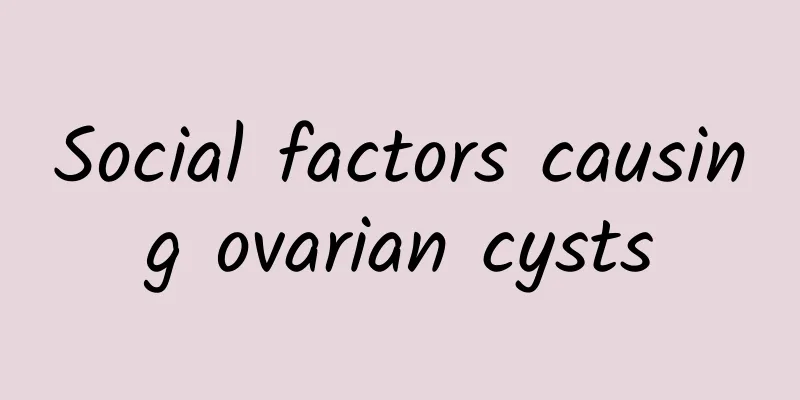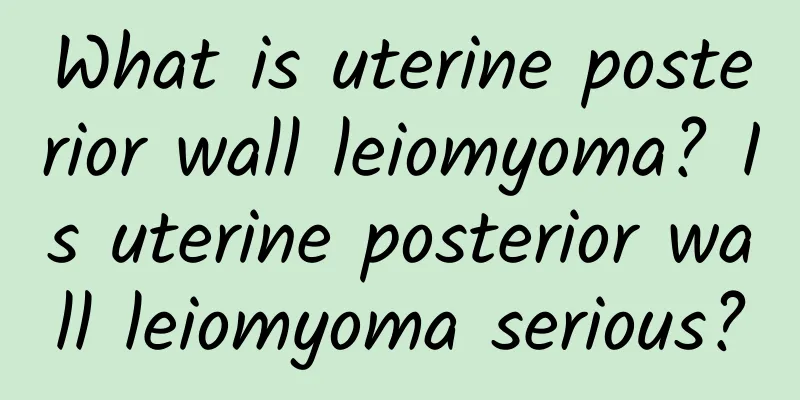Is it good to do minimally invasive surgery for cervical erosion?

|
Yes, cervical erosion is a normal physiological phenomenon. Clinically, do not treat it blindly. Erosion is mainly caused by the vigorous secretion of estrogen in young women, which leads to the outward migration of the cervical columnar epithelium and local erosion. Clinically, no treatment is required. For patients with cervical erosion, if they are fertile patients and the effect of drug treatment is not good, they can choose minimally invasive symptomatic treatment. Generally, most of them can choose physical symptomatic treatment. Generally, methods such as electrocoagulation, condensation, laser, etc. will be better. If they are fertile patients, they can be treated in this way. Minimally invasive surgery is generally used for moderate to severe erosion, with better clinical effects. Laser, freezing, microwave and other methods can be used. How long does it take to recover to normal after minimally invasive surgery for lumbar disc herniation? The most common minimally invasive surgeries for lumbar disc herniation are lateral endoscopic and nucleus pulposus ablation. After the operation, you usually get up and move around the next day and wear a waist device for about a month. After three months, you can jog lightly, do housework, and walk. For back muscle exercises, such as five supports and swallow flying, it is usually recommended to do them 3-5 days after the operation, which helps stabilize the spine and relieve symptoms. For perforaminal endoscopic or disc endoscopic, it is generally possible to recover in about a week after the operation, and fully recover in two weeks after the operation. It usually takes three months for minimally invasive surgery for lumbar disc herniation to basically return to normal, but overly strenuous exercise is still not allowed. Adherence to good rehabilitation training can also contribute to good healing after minimally invasive lumbar spine surgery. Diet after minimally invasive surgery for uterine fibroids After uterine fibroid surgery, you should pay attention to eating a light diet, eat nutritious and easily digestible food, and eat more foods containing protein, vitamins and iron, such as fish soup, fruits, vegetables, etc. After minimally invasive surgery for uterine fibroids, the following dietary principles should be noted: Eat foods containing protein, such as more fish and eggs. The diet after minimally invasive surgery for uterine fibroids can be semi-liquid food within 4 hours after surgery, which needs to be determined according to the specific minimally invasive surgery method. |
<<: What to do if you have cervicitis? Four tricks to make cervicitis invisible
>>: What are the reasons for delayed menstruation?
Recommend
What should I pay attention to if progesterone is low and there is threatened miscarriage?
What should I pay attention to if progesterone is...
What are the specific symptoms of pelvic inflammatory disease?
The incidence of pelvic inflammatory disease is g...
How to treat dysmenorrhea
Dysmenorrhea can be treated through medication, h...
How to prevent cervicitis? Seven ways women must know to prevent cervicitis
Cervicitis is one of the common gynecological dis...
NG sports prone to varicose veins 5 tips to wear the right elastic socks
The trend of exercising to lose weight is gaining...
What are the main measures for regulating irregular menstruation?
In life, irregular menstruation occurs very frequ...
Can I have a baby if I have vaginal candidal infection?
Can I have children if I have candidal vaginitis?...
Experts: Depressed women are more likely to develop uterine fibroids
We know that many female patients with uterine fi...
What are the symptoms of ovarian cysts?
What symptoms will appear after ovarian cyst? Ova...
How is pelvic inflammatory disease formed and how should it be treated?
Pelvic inflammatory disease is also called adnexi...
What are the causes of pelvic inflammatory disease?
Pelvic inflammatory disease has a certain impact ...
What are the methods for treating uterine fibroids? Briefly talk about three common uterine fibroid surgeries
Uterine fibroids are a gynecological disease that...
What should I do if my period is delayed after medical abortion?
What should I do if my period is delayed after me...
What can people with threatened abortion eat for three meals a day?
In our daily life, when a woman gets pregnant, we...
Some precautions for painless abortion
Do you know what are the precautions for painless...









